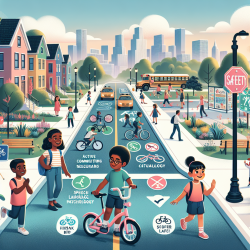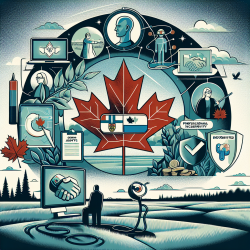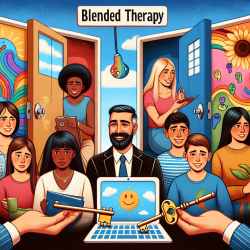Introduction
As professionals in the field of speech-language pathology, we are often at the forefront of advocating for environments that foster optimal development and learning for children. One critical aspect of this is ensuring that the environments children navigate daily, such as their routes to school, are safe and conducive to active commuting. Recent research on the Microscale Audit of Pedestrian Streetscapes for Safe Routes to School (MAPS-SRTS) provides valuable insights into how we can assess and improve these environments.
Understanding MAPS-SRTS
The MAPS-SRTS tool is an adaptation of previous audit instruments designed to evaluate the micro-scale environments around schools. This tool is specifically focused on assessing the safety and accessibility of routes children take to school. It evaluates various elements such as the presence of sidewalks, crosswalks, and other pedestrian-friendly features that contribute to a safe commuting environment.
Key Findings from the Research
The research conducted using the MAPS-SRTS tool in Austin, Texas, highlights several critical findings:
- Most of the subscales within the MAPS-SRTS tool demonstrated high reliability, with an intraclass correlation coefficient (ICC) of 0.97, indicating the tool's robustness in measuring the school travel environment.
- The tool's ability to identify micro-scale features such as sidewalk continuity, shade, and signage, which are crucial for safe active commuting, was emphasized.
- Importantly, the research suggests that improving these micro-scale features can significantly enhance the safety and appeal of active commuting routes for children.
Implications for Practitioners
For practitioners, the insights from this research are invaluable. By utilizing the MAPS-SRTS tool, schools and community planners can better understand the current conditions of pedestrian streetscapes and identify areas for improvement. This can lead to targeted interventions that enhance the safety and attractiveness of routes children use to commute to school.
Moreover, practitioners are encouraged to engage in further research and data collection using the MAPS-SRTS tool. By doing so, they can contribute to a growing body of evidence that supports the development of safer, more accessible school environments.
Encouraging Further Research
While the MAPS-SRTS tool provides a solid foundation for assessing school travel environments, there is always room for further research. Practitioners are encouraged to explore additional factors that may influence active commuting, such as parental perceptions of safety and the impact of community engagement in urban planning.
By continuing to gather data and refine our understanding of these environments, we can advocate for policies and interventions that prioritize the safety and well-being of children.
Conclusion
The MAPS-SRTS tool is a powerful resource for practitioners dedicated to improving the safety and accessibility of school routes. By leveraging this tool and engaging in further research, we can create environments that not only support active commuting but also contribute to the overall development and well-being of children.
To read the original research paper, please follow this link: Development, scoring, and reliability for the Microscale Audit of Pedestrian Streetscapes for Safe Routes to School (MAPS-SRTS) instrument.










